I was hiking in the foothills yesterday and noticed small pine cones that resembled both little pineapples and Christmas trees. It seemed they might be useful for wraps. So I gathered a number of them over the course of the hike. My left cargo pocket was so full the cones began to poke my leg.
This morning I took the cones and cut them in half on my scroll saw. Then I fired up my airbrushes and gave them some quick coloring: green on the left and red on the right.
The next step was to determine what was the best background paper to show the cone-trees. I had imagined it would be plain white. But a large remaining piece of shiny black shopping bag turned out to be the best. I used hot glue to seal up the black paper, which is very thick, needs to be fixed firmly, and does not look particularly good with lots of tape.
I then glued on the cones. The resulting wrap has a subdued holiday look, with dimensional richness.
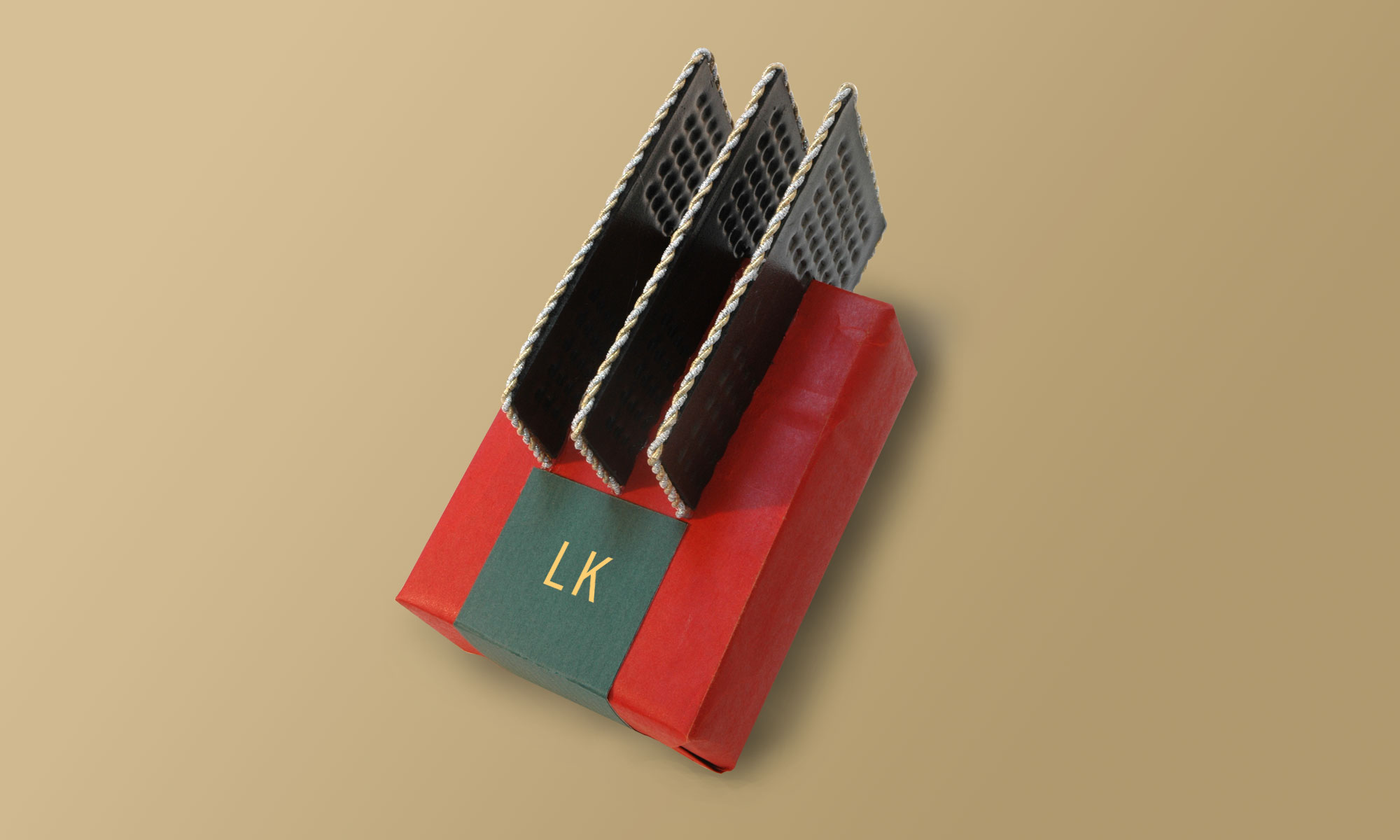
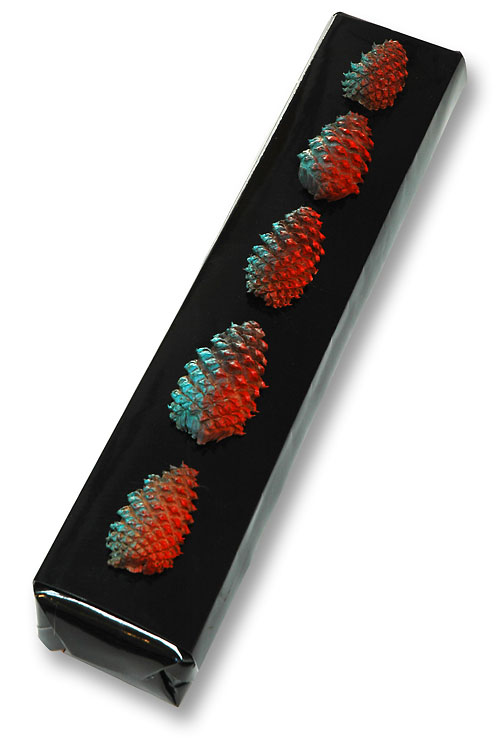
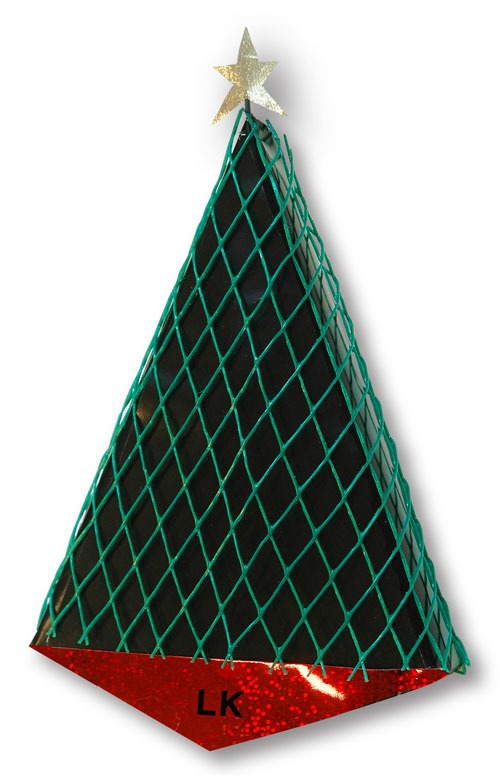
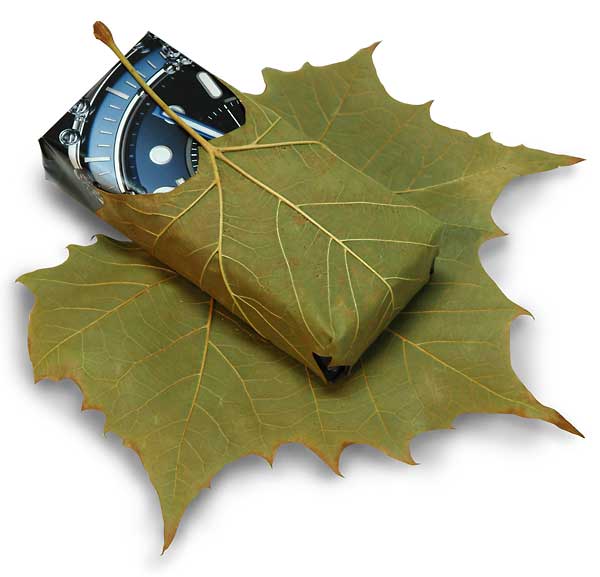 I was walking in the park when these huge leaves caught my eye. I brought them home. The gift box is wrapped in a piece of advertising. I chose a wristwatch image for its fine details of metal, glass and precise graphic forms. These machined details contrast with the equally complex but organic details in the leaves. I also chose it because autumn leaves are a poignant symbol of the passage of time.
I was walking in the park when these huge leaves caught my eye. I brought them home. The gift box is wrapped in a piece of advertising. I chose a wristwatch image for its fine details of metal, glass and precise graphic forms. These machined details contrast with the equally complex but organic details in the leaves. I also chose it because autumn leaves are a poignant symbol of the passage of time.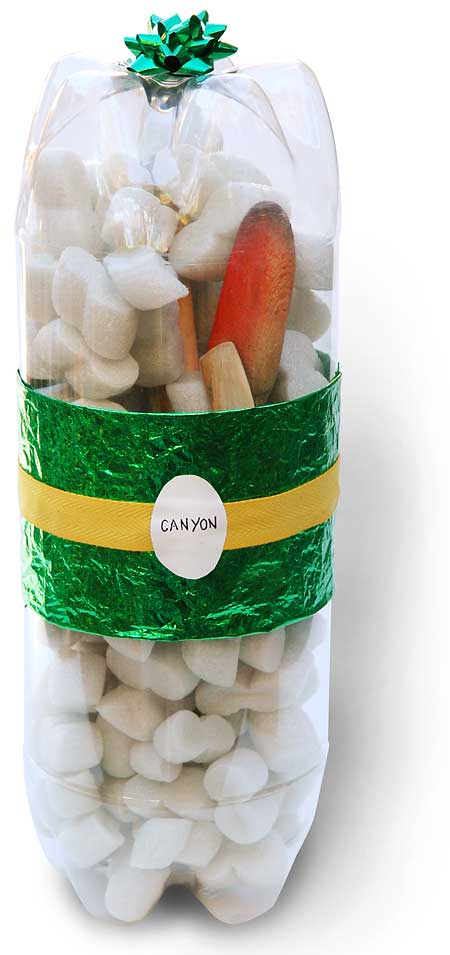 Today’s wrap embraces the 21st century’s mandate for greater transparency in all things. I was giving a small sculpture commemorating son Canyon’s 20th birthday, and I had the idea of using the same two-cylinder recycle-wrap design that I had used two weeks ago with shaving can lids. This time I would use PET soda bottles.
Today’s wrap embraces the 21st century’s mandate for greater transparency in all things. I was giving a small sculpture commemorating son Canyon’s 20th birthday, and I had the idea of using the same two-cylinder recycle-wrap design that I had used two weeks ago with shaving can lids. This time I would use PET soda bottles.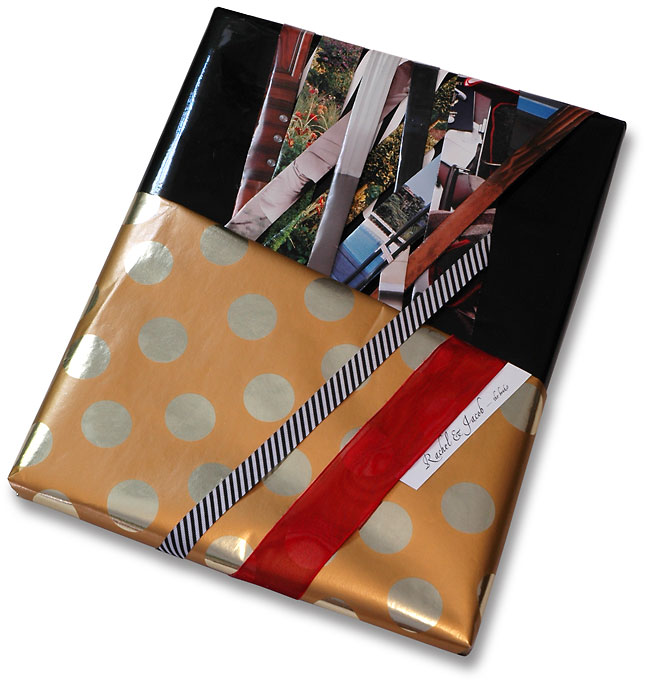
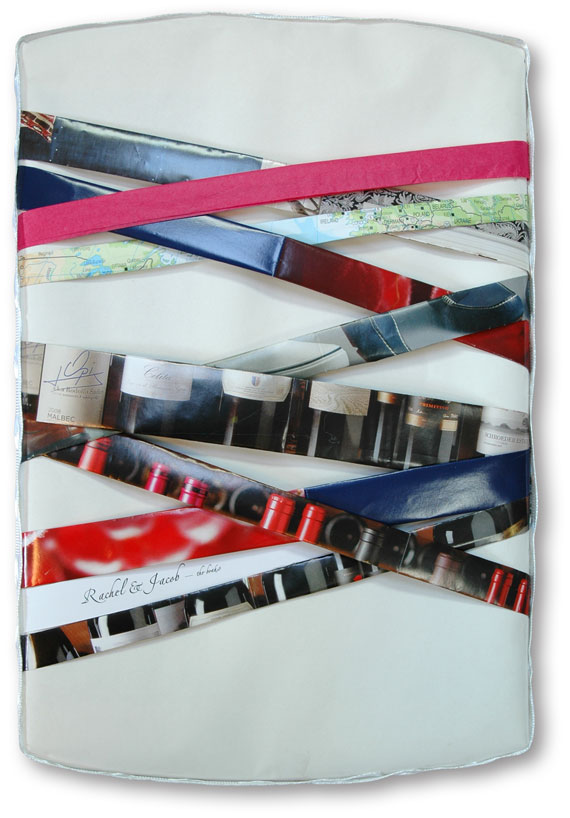
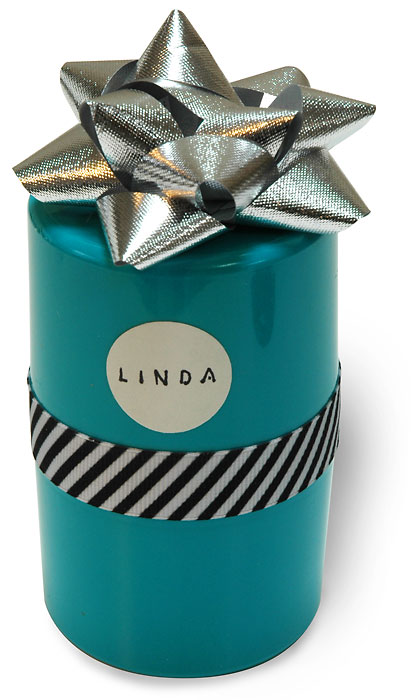
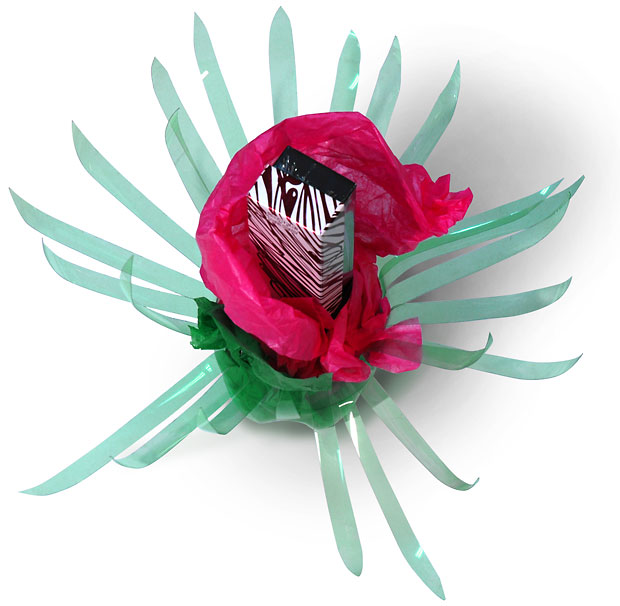 Today I made a birthday gift wrap for Linda using the poster-child material of the recycling craft world, the polyethylene terephthalate (PET) soft-drink bottle.
Today I made a birthday gift wrap for Linda using the poster-child material of the recycling craft world, the polyethylene terephthalate (PET) soft-drink bottle.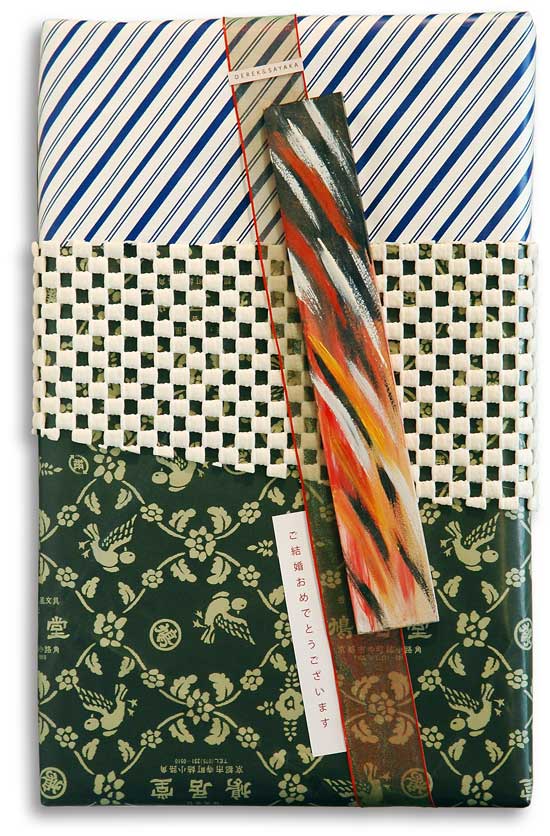 A young friend married a ballet dancer from Japan. To wrap our gift I reached for two scraps of paper that were very different. The light-colored piece with angled stripes is actually the back-side of fancy foil paper. The dark-colored piece is a small Japanese retail bag, cut open and laid flat.
A young friend married a ballet dancer from Japan. To wrap our gift I reached for two scraps of paper that were very different. The light-colored piece with angled stripes is actually the back-side of fancy foil paper. The dark-colored piece is a small Japanese retail bag, cut open and laid flat.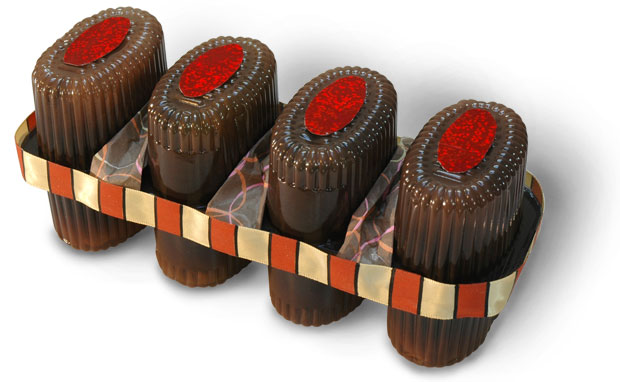 Continuing my fascination with the transient and expendable plastics of food packaging, I have been saving the flimsy molded materials found inside cookies, and candies. These translucent brown pieces from madelaine packages caught my eye because they look like tall cooking molds.
Continuing my fascination with the transient and expendable plastics of food packaging, I have been saving the flimsy molded materials found inside cookies, and candies. These translucent brown pieces from madelaine packages caught my eye because they look like tall cooking molds.